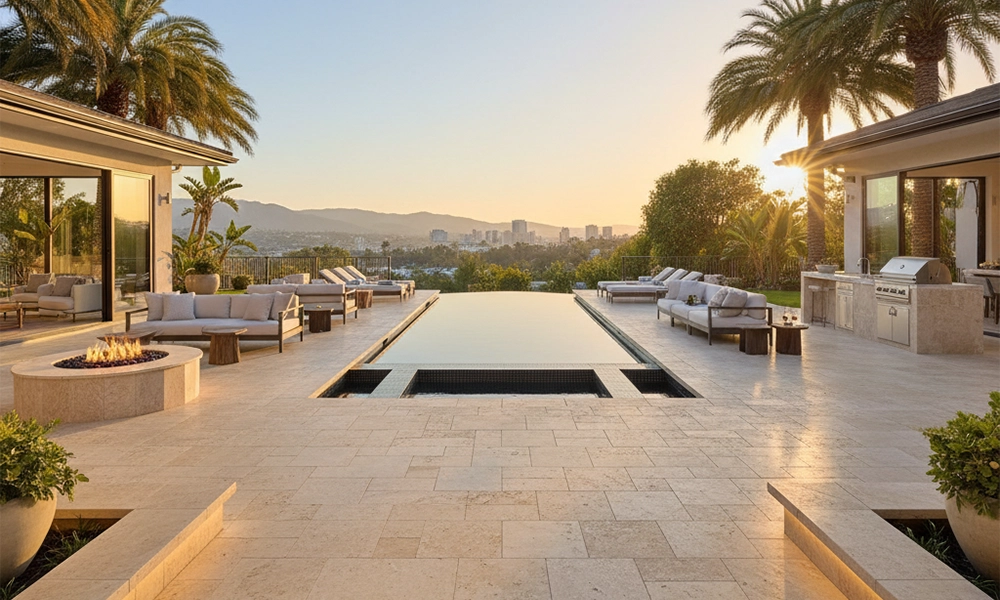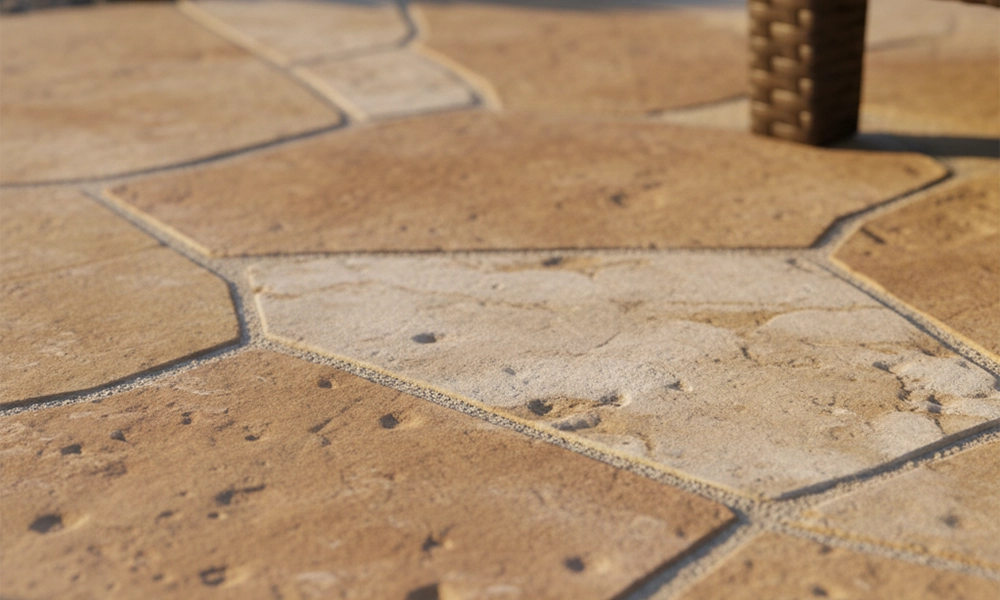The Timeless Evolution in Trends in Natural Stone Pavers 2025
The outdoor living space is no longer an afterthought; it is an integrated extension of the home, a sanctuary, and an expression of personal style. As homeowners and designers increasingly seek durability, character, and connection to nature, natural stone pavers have cemented their place as the material of choice for patios, walkways, pool decks, and driveways. They offer an unmatched blend of rugged resilience and sophisticated beauty that manufactured products simply cannot replicate.
The year 2025 brings a fascinating evolution in hardscape design, moving beyond simple functionality to embrace deep texture, organic connection, and refined palettes. This shift is driving exciting changes in how we select, size, and pattern these materials. Understanding the emerging Trends in Natural Stone Pavers is essential for anyone planning a landscape transformation this year. This comprehensive guide delves into the top 10 movements shaping the world of stone hardscaping, ensuring your outdoor project is both timeless and on-trend.

The Enduring Appeal of Natural Stone
Before exploring the 2025 trends, it’s worth reflecting on why natural stone continues to dominate high-end hardscaping. Each slab of sandstone, granite, or bluestone is unique, carrying the history of the earth within its grain and color variations. This individuality ensures that no two patios are exactly alike, providing an authentic, bespoke foundation for any outdoor design. Furthermore, natural stone is inherently durable, weathering beautifully over time to develop a coveted patina, rather than degrading or fading.
The 2025 focus is on maximizing this inherent value—using the stone’s authenticity and strength to meet modern demands for sustainability, complexity, and seamless indoor-outdoor flow. The current Trends in Natural Stone Pavers are all about celebrating the raw material while integrating it into sophisticated, multi-functional designs.
The Dominance of Warm Neutral Palettes
In 2025, the stark greys and cool tones of the recent past are softening. The dominant color palette for natural stone pavers is shifting toward warm neutrals—think rich creams, soft taupes, muted beiges, and the ever-popular “greige” (a blend of grey and beige).
Embracing Earthy Sophistication :
This trend is a direct reflection of a broader move in interior and exterior design towards creating comforting, grounding spaces. Stones like Limestone and certain types of Sandstone in shades of Buttermilk, Fossil Grey, and Desert Taupe are seeing massive spikes in popularity. These colors provide an understated, elegant backdrop that allows surrounding landscape elements—like vibrant plantings, richly textured furniture, and architectural features—to shine.
The appeal lies in their versatility. A warm neutral natural stone paver can transition effortlessly from a rustic-chic patio to a sleek, modern pool deck. They evoke the sun-drenched landscapes of the Mediterranean or the rugged, warm beauty of the American Southwest, instantly adding a layer of organic sophistication to any property. This subtle color shift is perhaps the most defining characteristic among the Trends in Natural Stone Pavers this year, influencing every other design choice.
Large Format, Seamless Flow
The desire for uninterrupted visual space, a core principle of modern design, is manifesting strongly in the sizing of natural stone. Homeowners are increasingly opting for large format pavers, moving away from traditional small-scale cobbles or multi-size kits.
Creating Visual Expansion :
Pavers measuring 24″x24″ or even larger rectangular slabs are becoming standard. This choice minimizes grout lines, which in turn reduces visual clutter and makes any paved area—from a small urban patio to an expansive terrace—feel larger and more cohesive. The large scale highlights the natural veining and unique coloration of the stone itself, treating the paver surface like a grand canvas.
Furthermore, this trend supports the push for seamless indoor-outdoor living. By matching the size and material of the interior flooring (often a large-format tile or slab) with the exterior natural stone pavers, designers create a truly continuous transition. This technique blurs the line between inside and out, making the entire home feel more spacious and integrated.
The Textured and Tumbled Finish
While polished, high-gloss finishes have their place indoors, the 2025 hardscape trend favors a finish that is tactile, authentic, and safe. Tumbled, brushed, and flamed finishes are highly sought after for their organic feel and superior slip resistance.
The Beauty of Imperfection :
A tumbled finish softens the edges and corners of the stone, giving it an aged, established look as if it has been walked on for decades. This subtle imperfection is highly valued for adding character and warmth. Similarly, a flamed or brushed finish provides a slightly rough, non-slip texture that is ideal for high-traffic areas and, critically, for pool surroundings.
This focus on texture celebrates the inherent qualities of the stone. For example, a flamed Granite paver exposes the crystal structure, deepening its visual complexity, while a brushed Travertine emphasizes its natural porosity and subtle color shifts. The selection of finish is now as important as the stone type and color, playing a key role in defining the overall aesthetic and functionality of the hardscape.

Permeable Paver Systems and Sustainability
Environmental consciousness and the need for better stormwater management are no longer niche concerns—they are mainstream hardscape necessities. This is driving a significant trend toward permeable natural stone paver systems.
Function Meets Eco-Responsibility :
Permeable paving allows rainwater to filter through the surface and be absorbed back into the ground naturally, rather than running off into storm drains. While this system traditionally used gravel or specialized manufactured blocks, 2025 sees the increasing use of natural stone pavers laid with slightly wider joints filled with a permeable aggregate.
This approach addresses environmental regulations and also mitigates localized flooding, making it a functional and responsible choice. Homeowners are drawn to the idea that their stunning stone patio is also a part of a sustainable water management plan. The enduring strength of natural stone pavers ensures that these eco-friendly installations are also incredibly long-lasting.
Sandstone’s Renaissance
While granite and bluestone remain classics, Sandstone is undergoing a major renaissance and is arguably the star material among the Trends in Natural Stone Pavers for 2025.
Versatility and Warmth :
Sandstone’s appeal is rooted in its beautiful, layered texture and its vast range of naturally occurring warm, earthy colors, aligning perfectly with Trend #1. From soft creams to rich tans and subtle browns, its color palette is instantly grounding and inviting. Furthermore, its inherent slip-resistant texture makes it an excellent choice for a wide array of applications, including pool coping and steps. The availability of Sandstone in various sizes, from traditional flagstone patterns to modern large-format slabs, allows for immense design flexibility.
Continue expanding this section to a length of approximately 300 words, using the keyword Trends in Natural Stone Pavers again.
Curated Color-Blocking and Pattern Integration
This section will detail the use of two or three complementary natural stone colors or types to create distinct zones or borders, moving beyond single-color installations. Focus on how contrasting textures or tones—e.g., a dark slate border around a light travertine field—define areas like an outdoor dining room or an integrated fire pit area. Continue to expand to approximately 300 words.
The Rise of the Vertical Stone Accent
This trend will discuss using the same natural stone pavers, or complementary stone veneers, on surrounding vertical elements—such as retaining walls, outdoor kitchen bases, and fireplace surrounds—to unify the hardscape design. The effect is a fully immersive, layered outdoor environment that emphasizes the material’s beauty. Continue to expand to approximately 300 words.
Integrated Lighting and Technological Stone
Discuss the trend of embedding subtle, low-voltage lighting directly into or at the edge of the paver layout. This is not about the stone itself, but the clever integration of light to highlight the stone’s texture and color at night, enhancing safety and ambiance. Mention how this partnership enhances the aesthetic value of the natural stone pavers. Continue to expand to approximately 300 words.
Focusing on Outdoor Wellness Zones
Explore the shift in outdoor design towards creating dedicated spaces for relaxation and wellness. This includes paving around yoga platforms, meditation gardens, and dedicated spa areas. These applications require specific material properties—like the cool-to-the-touch nature of certain types of Limestone or Travertine—making natural stone the ideal choice. Continue to expand to approximately 300 words.
The Return to Irregular Flagstone and Organic Shapes
While large format is key for modern aesthetics, a counter-trend is the embrace of irregular or random flagstone patterns for a more rustic, cottage, or naturalistic look. This trend is popular for secondary paths and garden walkways, prioritizing an organic blend with the landscape. It emphasizes the raw, uncut beauty of the natural stone pavers.
Conclusion: Investing in Timelessness
The Trends in Natural Stone Pavers for 2025 are a clear reflection of a deeper desire for connection, authenticity, and sustainability in our living spaces. From the calming warmth of neutral tones to the clean lines of large-format slabs and the tactile beauty of tumbled finishes, natural stone offers a unique way to invest in a landscape that will not only look stunning today but will gain character and value for generations to come. Choosing natural stone pavers is choosing a material that is literally timeless. It’s a decision that grounds your home in the permanence and beauty of nature.


